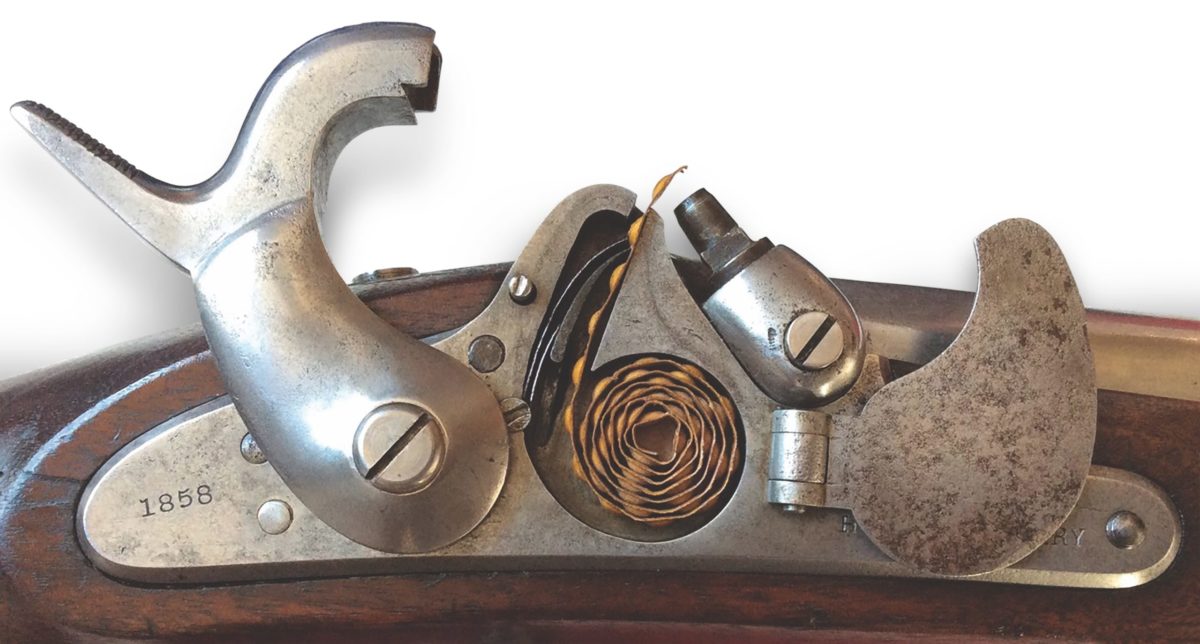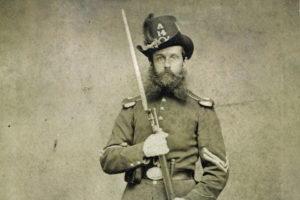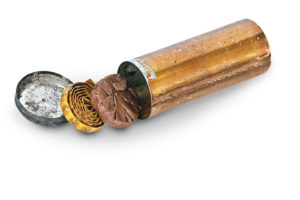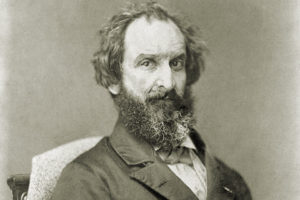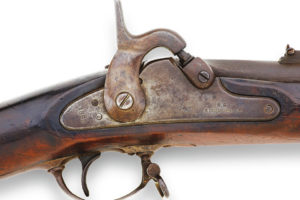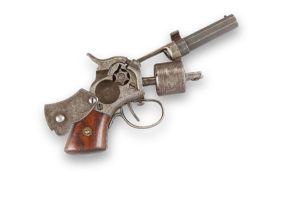In the decades leading up to the Civil War, Minié balls and rifling began to replace round balls and smoothbore barrels in U.S. Army arsenals. Percussion caps had come into use on Model 1842 smoothbore muskets, but it was hoped an even more rapid means of ignition could be developed. A temporary solution to that problem came from an unorthodox source, a New York dentist named Edward Maynard, who had dropped out of West Point due to ill health. In 1845, Maynard patented a tape priming system that used a paper roll of caps he described as such: “A strip of paper, either in a moist or dry state is, by means of appropriate instruments and by the application of pressure, forced out into cup forms…the spaces between the cups being sufficient to prevent the communication of fire from one to the other. These cups are filled with the percussion or fulminating mixture, even with the original surface of the strip, it is then coated with a varnish…dissolved in alcohol, and covered with a thin strip of paper, and the whole is then varnished over.” Maynard also invented the spring-loaded system that would feed the caps into firing position. Confused? Think of the caps you loaded in your cap gun, it’s about the same thing.
Jefferson Davis, who served as secretary of war from 1853 to 1857, took an interest in Maynard’s invention and initially paid him $1 for every musket made that used a tape primer. In 1854, the government gave the dentist a lump sum of $50,000 for unlimited use of the system. The washed-out cadet was getting rich, and his system was at the core of the U.S. Army’s first percussion rifle musket, the handsome Model 1855, of which 50,000 were made at the Springfield, Mass., and Harpers Ferry, Va., government arsenals. In addition, tape primers were used on government-made pistols and shorter Model 1855 rifles.
Maynard claimed that the varnish on the paper and the protection of the magazine door would prevent dampness from affecting the primers, but that proved false. The paper strips were also prone to “chain fires,” where the spark from one cap would set off others in the roll. Due to those and other problems, the Maynard primer was abandoned by the U.S. Army in favor of the percussion cap. Model 1855s saw Civil War service using common percussion caps.

